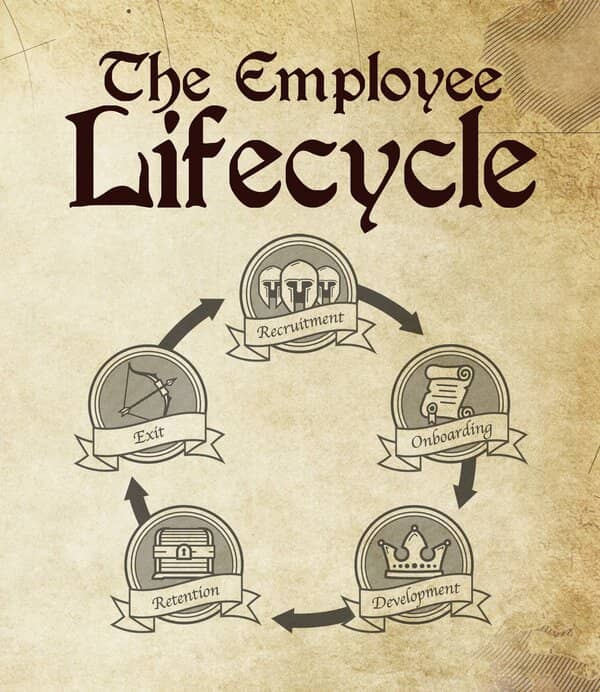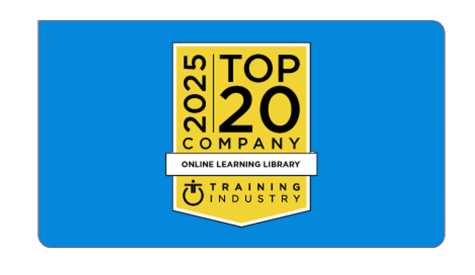Rethinking the Employee Lifecycle

It’s interesting when I see marketing strategies translating into the HR and training spaces.
Many HR professionals are familiar with the employee lifecycle. The main idea is that every employee goes through certain stages with your organization, including recruitment, onboarding, ongoing development, retention, and exit or separation. Different HR programs with different goals apply at each stage.

Employee Lifecycles Are a Lot Like…
So what does marketing have to do with employee lifecycles? Whenever I see those cyclical diagrams with all the stages, I can’t help but think a little about the customer lifecycle in marketing. The idea is very similar: Customers go through a series of stages when considering your company or product, stages like Awareness, Consideration, Purchase, and Retention (or Defection). Marketing applies different strategies for each stage, with the goal of moving the customer to the next stage.
Marketers understand there is value in mapping the actual customer journey. The messages and content that marketing and sales deliver look, feel, and sound different at each stage. Using HSI as the example, we offer different content for each stage to help our prospects and customers follow their own journey:
Awareness: Our blog post on adult learning theory is very popular and brings many new visitors who have never heard of HSI to our website.
Consideration: Our Guide to Creating an Employee Training and Development Program is a helpful resource for people at the beginning of their planning and, ideally, considering HSI.
Purchase: This article, How to Compare Employee Training Pricing, will help decision makers compare the proposals and pricing for their short-list of vendors and think through the decision beyond just going with the cheapest offer.
Retention: We offer articles like How to Promote Training Courses to Employees to help our customers get the most out of their training library and better engage their learners.
Which brings me back to the employee lifecycle. Organizations can tailor their training solutions to apply to the employee journey and look at things from the employee’s point of view.
The Employee Journey and Corporate Training Programs
The employee’s journey can give organizations some keen insights into their corporate training and development programs. The kinds of corporate training you offer a seasoned employee should be different from those you provide during onboarding, for example. The same goes for the frequency of training, the depth of training, and even the kinds of training topics offered. So how exactly does one go about accommodating all those various needs?
When we think in cycles, the tendency is to prepare a set schedule for training where, say, all new employees take a set curriculum, all HiPos take another curriculum, and so on. This is not a bad way to do things, especially for larger organizations.
But what would happen if you also allowed employees to direct their own learning, setting their own path, at their own pace?
What if training was geared not just toward achieving certain company-mandated goals, but toward helping employees with the hundreds of little challenges that they confront daily in their work and private lives?
My guess is that your corporate training programs would look very different.
We Wrote the Book on Employee Journeys
Going through each stage of an employee’s journey, discussing their needs and goals at each stage, and suggesting how to tailor training programs to meet those needs and goals...that goes well beyond what I can cover in a blog post. Fortunately, we created an eBook to fill that need. In it you can learn:
- The differences between an employee lifecycle model and an employee journey
- The ways in which training materials can do “double duty” as recruitment tools
- Why onboarding should really start well in advance of day 1
- The one element that, when missing, makes employees 12x more likely to leave your organization
- What steps are involved in a highly engaging development program
- Four major factors that contribute to employee turnover (and how to mitigate them)
- How exit interviews can give you greater insight into employee journeys so you can improve them
We understand that part of the draw of the employee lifecycle model is that it gives a nice visual representation of what HR is all about. We wanted to keep that visual element in mind. So, not only is the eBook full of useful stats and information, but we also worked hard to make it visually appealing as well. It has a mythical design of a hero’s epic journey with dragons, ogres, castles, and fairies!
Additional Resources
- The Employee Journey: How to Train Throughout the Entire Employee Lifecycle
- Welcome Aboard: Benefits of Using Video for Employee Onboarding
- Why You Should Add Video to Your Leadership Training Program
- Training's Role in Employee Retention Management


